This post may contain affiliate links. Please read my disclosure.
The ultimate Korean street food, this odeng soup, or Korean fish cake soup, is basically skewers of fish cake served in a flavor packed anchovy broth. Not only is it delicious and savory, but it's ultra easy to make!

The fish cake soup is is a common street food in Korea (along with these hotteok and goguma mattang) and popular served from street carts during colder winter months. It's got a warm, flavor packed broth with skewers of delicious fried fish cakes (also called eomuk) and a dipping sauce that will keep you coming back for more.
I like to add a little spice to the sauce by adding a touch of gochugaru - Korean chili flakes - along with the soy sauce and sesame oil for an umami, spicy, nutty flavor.
Jump to:
Why this odeng soup recipe works
- The recipe is incredibly easy to make and can be prepared in advance easily.
- It's a very quick recipe, and has very few steps involved and the results are an ultra comforting soup.
- Ingredients can easily be substituted with what you can find with minimal impact on the results.
Want to Save This Recipe?
Enter your email & I'll send it to your inbox. Plus, get great new recipes from me every week!
By submitting this form, you consent to receive emails from Went Here 8 This.
What are Korean fish cakes?
Korean fish cakes, also known as eomuk, are made of ground white fish (like mullet) pureed with vegetables and seasoning and often fried (sometimes steamed as well).

Ingredients

The full list of ingredients and amounts is included in the recipe card at the bottom of the post.
Traditional odeng soup uses thinner sheets of fried fish cake sliced in strips and placed on skewers. That said, any fish cakes can be used to put on the skewers and they will work fine. You can even buy pre-packaged skewered fish cakes at the Korean grocery store or Asian market for convenience!
Korean fish cakes, also called eomuk, are made from ground up fish and flour or some type of starch along with vegetables and seasoning and then steamed or fried and used in street foods like this spicy tteokbokki and rabokki.
We use dried anchovies and kombu (dried kelp)to make the broth - both provide an intense umami flavor alongside the Korean radish (you can substitute daikon), soy sauce and rice wine used in the broth.
Step by step instructions to make fish cake soup






Serve skewers in broth garnished with green onions and sauce on the side.

Expert tips
- Strain the broth twice to make it extra clear if desired.
- You can substitute fish cake sheets for cut up pieces of fish cake, skewered fish balls, or even fried tofu!
- You don't have to skewer the fish cakes - you can just put the pieces of it right into the broth and eat it that way.
- Taste the broth before adding the salt. Add a little at a time until it's salty enough for you (everyone has different salt preferences and the kelp and anchovies have saltiness already).

Frequently asked questions
Odeng also means fishcake (or eomuk) in Korea, and stems from the word Oden in Japanese (a Japanese fish cake stew). These steamed or friend fish cakes are often used in popular Korean foods.
Odeng are made from ground up fish and flour or some type of starch along with vegetables and seasoning and then steamed or fried.
There is essentially no difference. Odeng and eomuk are the same thing (both meaning Korean fish cake).
Leftovers can be stored (broth, fish cake and dipping sauce separately) in separate containers in the fridge for up to 3 days. Reheat in a saucepan and serve with dipping sauce.
You can also freeze leftover broth, or make it in advance and store it in the freezer (or fridge). Thaw it out in the fridge overnight, or heat it straight from frozen until warmed through.
More favorite Korean recipes
If you love this recipe, please leave a star rating and a comment below and let us know your favorite thing about it. We'd also love to connect on Instagram! Follow us at @went_here_8_this for awesome recipes and all sorts of fun food stuff 🙂
Recipe

Korean Fish Cake Soup (Odeng)
Ingredients
- 12 ounces fish cake sheets
- 2 green onions thinly sliced
Broth:
- 8 cups water
- 1 ounce dried anchovy heads removed
- 4 ounces daikon or Korean radish cut in cubes
- ½ ounce dried kelp kombu
- 2 tablespoons soy sauce
- 2 tablespoons rice wine
- 2 garlic cloves
- ½ small onion chopped
- 1 tablespoon salt (taste broth before adding)
Dipping Sauce:
- ¼ cup soy sauce
- ½ teaspoon sugar
- 1 teaspoon Korean pepper flakes
- 1 teaspoon sesame oil
- 1 garlic clove minced
- 2 teaspoon minced green onion white parts only
Instructions
- Combine all the ingredients for the broth (except salt) and bring to a simmer. Simmer for 10 minutes, then remove the kelp.
- Simmer another 10 minutes then strain through a mesh strainer.
- Add salt as needed for flavor.
- While broth simmers, mix the sauce ingredients together and set aside to allow flavors to meld.
- Cut the fish cake sheets in strips and skewer them, or buy prepackaged fish cake skewers.
- Add the skewered fish cakes to the broth and simmer for 3-5 minutes.
- Serve skewers in broth garnished with green onions and dipping sauce on the side.
Expert Tips:
- Strain the broth twice to make it extra clear if desired.
- You can substitute fish cake sheets for cut up pieces of fish cake, skewered fish balls, or even fried tofu!
- You don't have to skewer the fish cakes - you can just put the pieces of it right into the broth and eat it that way.
- Taste the broth before adding the salt. Add a little at a time until it's salty enough for you (everyone has different salt preferences and the kelp and anchovies have saltiness already).
Nutrition


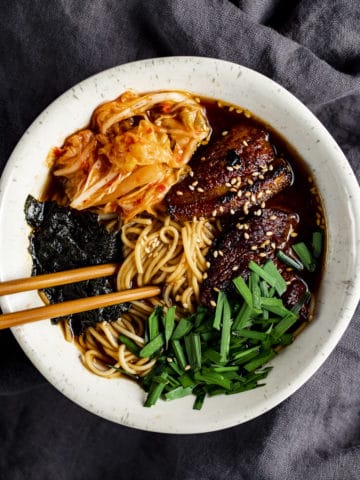
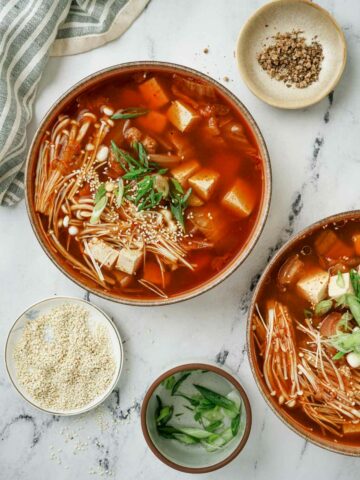
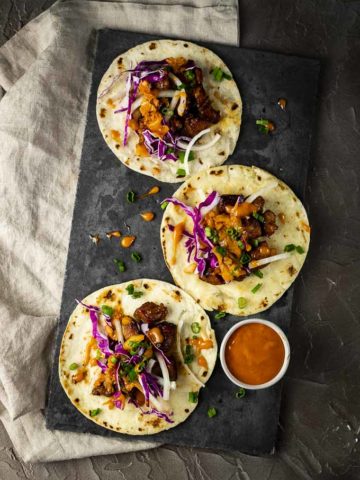
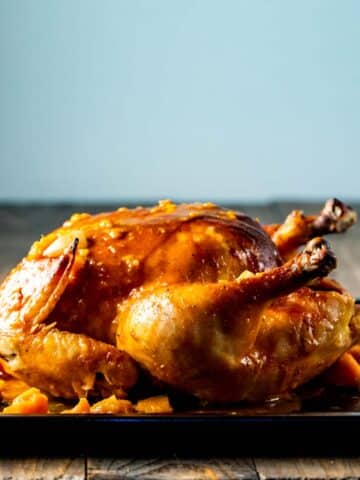

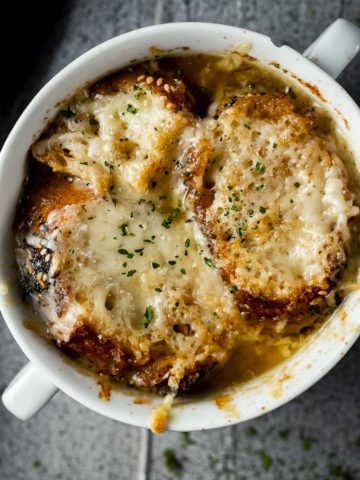
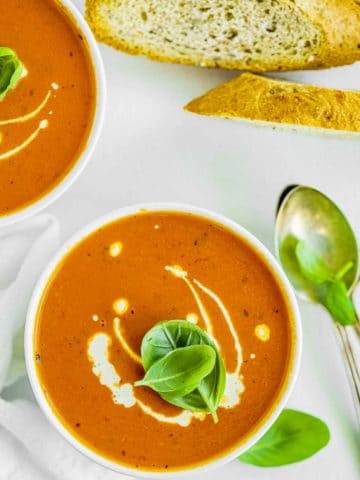
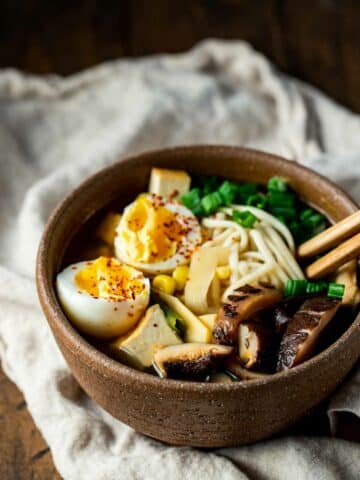
Danielle says
Super easy to make and so flavorful!